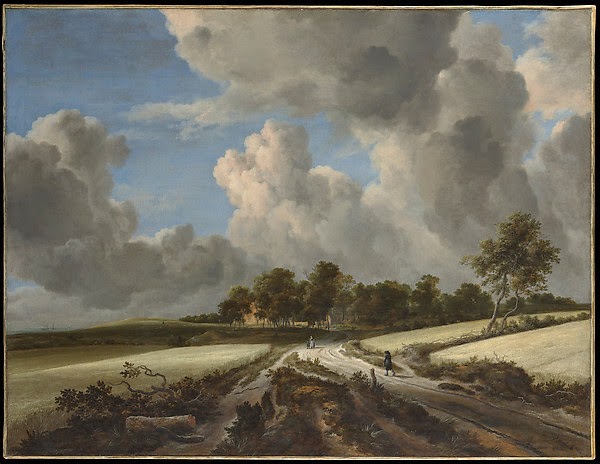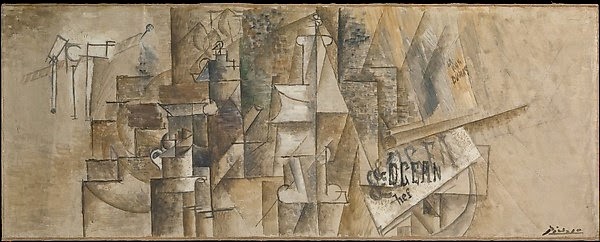Main entrance to the Metropolitan Museum of Art on 5th Avenue and 82nd Street
The Temple of Dendur in the Egyptian Wing
The Petrie European Sculpture Court
The Greek and Roman Galleries
The 19th Century European Art Galleries
The Metropolitan Museum of Art is one of the greatest encyclopedic museums in the world with major works of art from almost all cultures and time periods. Its only rivals for size and scope are the Louvre in Paris and the British Museum in London. Tourists come from around the world to see this museum. All you have to do is to take a subway to get there.
For this assignment, you are required to visit the Metropolitan Museum at least once and to turn in proof of your visit.
Choose one of the following comparisons to visit, to find, to see for yourself, and then to describe, analyze, and compare for the semester.
The Metropolitan Museum is very big, so you will need a map. Go here for online maps and to download a PDF of the museum map.
Comparisons

Left: Coffin and mummy of Khnumhotpe, Egypt, Middle Kingdom
Right: Coffin and mummy of Kharushere, Egypt, New Kingdom
both first floor, Egyptian Galleries
both first floor, Egyptian Galleries
***
Left: Column from the Temple of Pharaoh Sahure, Egypt, Old Kingdom, Egyptian Galleries
Right: Column from the Temple of Artemis at Sardis, Greece, Hellenistic Period, Hellenistic and Roman Galleries
both first floor
***
Top: Coffin of Khnumhotpe, Egypt, Middle Kingdom, Egyptian Galleries
Bottom: Endymion Sarcophagus, Rome, Hellenistic and Roman Galleries
both first floor
***
Left: Pharaoh Hatshepsut seated, Egypt, New Kingdom, Egyptian Galleries
Right: Emperor Caracalla, Rome, Hellenistic and Roman Galleries
Portraits of two absolute Rulers of Empires
both first floor
***

Left: Pharaoh Hatshepsut Standing in Devotional Attitude, Egypt, New Kingdom, Egyptian Galleries
Right: The New York Kouros, Greece, Archaic Period, Greek Galleries
both first floor
***

Left: The New York Kouros, Greece, Archaic Period
Right: Standing Figure, Greece, Hellenistic Period
both first floor
***
Left: Aphrodite, Greece, Hellenistic, first floor
Right: Auguste Rodin, Eve, Europe, 19th century, second floor, 19th Century Galleries
***

Left: Head of an Athlete, Roman copy of a Greek original
Right: Portrait bust of a Roman citizen, Rome
both first floor
***
Left: Ciborium, 12th century, from a church in Rome, first floor, Medieval Galleries
Right: Mihrab, 14th century, from a mosque in Isfahan, Iran, second floor, Islamic Galleries
Both of these served as focal points for congregational worship. They focused the prayers of worshippers from two different religions with very different religious beliefs and practices. How did those differing beliefs and practices shape these two structures?
Left: The Jaharis Byzantine Lectionary, Byzantine, first floor Medieval Galleries
Right: Quran Manuscript from the Ottoman Empire, second floor, Islamic Galleries
***

Left: Virgin and Child Reliquary, 12th century
Right: Virgin and Child by Claus de Werve, 14th century
both first floor Medieval Galleries
***
Left: Petrus Christus, Portrait of a Carthusian Monk
Right: Rembrandt, Portrait of a Woman Holding a Pink Carnation
both second floor European Painting Galleries
***
Left: Jacob Ruisdael, Wheat Fields, 17th century, European Painting Galleries
Right: Vincent Van Gogh, Wheat Fields With Cypress Trees, 19th century, 19th Century Galleries
both second floor
***
Left: Frans Hals, Portrait of a Man, 17th century, second floor, European Painting Galleries
Right: Pablo Picasso, Portrait of Gertrude Stein, first floor, 20th Century Galleries
***

Left: Jan Vermeer, Woman with a Water Pitcher, 17th century, second floor, European Painting Galleries
Right: Edvard Munch, Saint-Cloud, 19th century, second floor, 19th Century Galleries
***
Left: Titian, Venus and Adonis, 16th century
Right: Peter Paul Rubens, Venus and Adonis, 17th century
both on the second floor, European Painting Galleries
***
Left: Willem Kalf, Still Life with Fruit, Glassware, and a Wanli Bowl, 17th century, second floor, European Painting Galleries
Right: Pablo Picasso, Pipe Rack and Still Life on a Table, 20th century, first floor, 20th Century Galleries
***
Left: Caravaggio, The Denial of Peter, 17th century, second floor European Galleries
Right: Franz Joseph Navez, Massacre of the Innocents, 19th century, second floor, 19th Century Galleries
***
Left: Caspar David Friedrich, Two Men Contemplating the Moon, 19th century, second floor, 19th Century Galleries
Right: Vincent Van Gogh, Cypresses with the Moon, 19th century, second floor, 19th Century Galleries
***
Left: Jean-Francois Millet, Haystacks, Autumn, 19th century
Right: Claude Monet, Haystacks (Effect of Snow and Sun), 19th century
both are on the second floor in the 19th Century Galleries
***
Left: Henri Fantin-Latour, Still Life with Flowers and Fruit, 19th century
Right: Paul Cezanne, Apples and Primroses, 19th century
both can be found on the second floor in the 19th Century Galleries
***
Left: Claude Monet, Vetheuil in Summer, 19th century
Right: Georges Seurat, Gray Weather, Grand Jatte, 19th century
both are found on the second floor in the 19th Century Galleries
***
Left: Jean Baptiste Carpeaux, Ugolino and His Sons, 19th century
Right: Auguste Rodin, The Burghers of Calais, 19th century
both large sculptures are on the first floor in the Petrie Sculpture Court
***
Left: Paul Klee, Variations (Progressive Motif), 20th century, first floor, 20th Century Galleries
Right: folio from the "Blue Quran," 10th century, second floor, Islamic Galleries
***














































